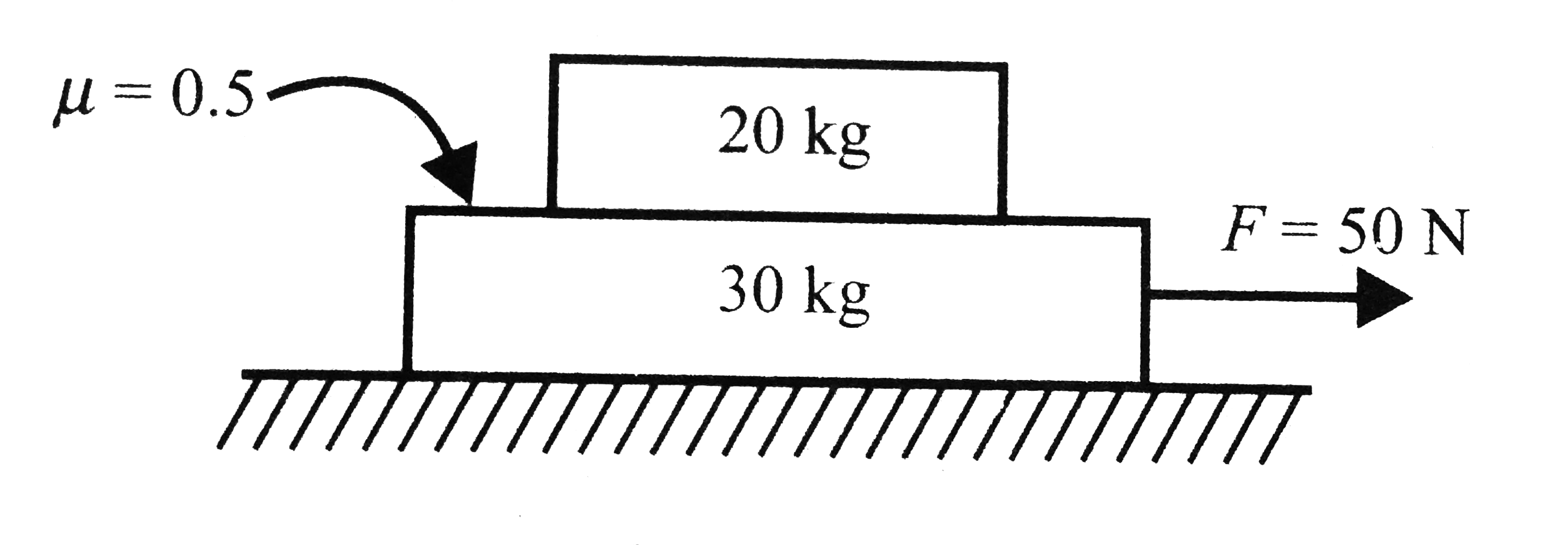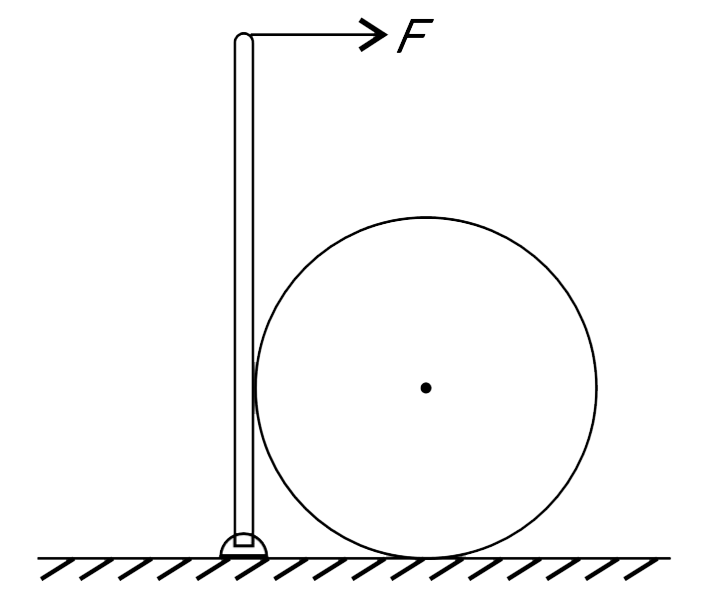A bowler holds a bowling ball (M = 76 kg) in the palm of his hand (Fig). His upper arm is vertical, his lower arm (1.9 kg) is horizontal. What is the magnitude of (a) the force of the biceps muscle on the lower arm and (b) the force between the bony structures at the elbow contact point?

(a) 684N≈6.8×102N, (b) 592N=5.9×102N
Topper's Solved these Questions
- BOOK - RESNICK AND HALLIDAYCHAPTER - RIGID BODY DYNAMICS-IIEXERCISE - PRACTICE QUESTIONS28videos
RIGID BODY DYNAMICS-II
- BOOK - RESNICK AND HALLIDAYCHAPTER - RIGID BODY DYNAMICS-IIEXERCISE - PRACTICE QUESTIONS (More than One Option Correct Type)2videos
RIGID BODY DYNAMICS-II
- BOOK - RESNICK AND HALLIDAYCHAPTER - RIGID BODY DYNAMICS-IIEXERCISE - CHECKPOINT4videos
RIGID BODY DYNAMICS-II
- BOOK - RESNICK AND HALLIDAYCHAPTER - RIGID BODY DYNAMICS - IEXERCISE - PRACTICE QUESTIONS (INTEGER TYPE))3videos
RIGID BODY DYNAMICS - I
- BOOK - RESNICK AND HALLIDAYCHAPTER - TEMPERATURE, ZEROTH LAW OF THERMODYNAMICS AND THERMAL EXPANSION EXERCISE - PRACTICE QUETIONS (Integer Type)4videos
TEMPERATURE, ZEROTH LAW OF THERMODYNAMICS AND THERMAL EXPANSION
Similar Questions
A thief intends to enter an apartment by climbing a ladder but foolishly places the upper end against a window. When he is 3.00 m up the ladder, the window is on the verge of shattering. His mass is 90.0 kg, the ladder's mass is 20.0 kg, the ladder's length is 5.00 m, and the foot of the ladder is 2.50 m from the base of the wall, on a non-slip ground surface. What are (a) the magnitude of the force on the glass from the ladder, (b) the magnitude of the force on the ladder from the ground, and (c) the angle between that ground force and the horizontal?
View SolutionA small block of mass 20kg rests on a bigger block of mass 30kg, which lies on a smooth horizontal plane. Initially the whole system is at rest. The coefficient of friction between the blocks is 0.5. The horizontal force F=50N is applied on the lower block.

a. Find the work done by fricitonal force on upper block and on the lower block in t=2s.
b. Is the magnitude of work done by the frictional force on upper and lower blocks same?
c. Is the work done by the frictional force on the upper block converted to heat or mechanical energy or both?View Solution
Knowledge Check
- Question 1 - Select One
An overweight acrobat, weighing in at 115 kg, wants to perform a single hand stand. He tries to cheat by resting one foot against a smooth frictionless vertical wall. The horizontal force there is 130 N. What is the magnitude of the force exerted by the floor on his hand? Answer in N.
A1134B1257C997D1119
A small block of mass 20kg rests on a bigger block of mass 30kg, which lies on a smooth horizontal plane. Initially the whole system is at rest. The coefficient of friction between the blocks is 0.5. The horizontal force F=50N is applied on the lower block.

a. Find the work done by fricitonal force on upper block and on the lower block in t=2s.
b. Is the magnitude of work done by the frictional force on upper and lower blocks same?
c. Is the work done by the frictional force on the upper block converted to heat or mechanical energy or both?View SolutionA uniform rod of mass M and length L is hinged at its lower end on a table. The rod can rotate freely in vertical plane and there is no friction at the hinge. A ball of mass M and radius R=L3 is placed in contact with the vertical rod and a horizontal force F is applied at the upper end of the rod.
(a) Find the acceleration of the ball immediately after the force starts acting.

(b) Find the horizontal component of hinge force acting on the rod immediately after force F starts acting.View SolutionA boy of mass 40kg is climbing a vertical pole at a constant speed.If the coefficient of friction between his palms and the pole is 0.8 and g=10ms2 ,the horizontal force that he is applying on the pole is?
View SolutionA person holds a block weighing 2kg between his hands & keeps it from falling down by pres-sing it with his hands. If the force exerted by each hand horizontally is 50N, the coefficient of friction between the hand & the block is (g=10ms−2)
View SolutionTwo blocks are in contact on a frictionless table. A horizontal force is applied to the larger block, as shown in Fig. 5-53. (a) If m1=2.3 kg,m2=1.2 kg, and F = 3.2 N, find the magnitude of the force between the two blocks. (b) Show that if a force of the same magnitude F is applied to the smaller block but in the opposite direction, the magnitude of the force between the blocks is 2.1 N, which is not the same value calculated in (a). (c) Explain the difference.
 View Solution
View SolutionA man holds a 2 kg book between his palms so that each hand exerts the same horizontal force on the book.The coefficient of static friction between the palms and the book is 0.4 and g= 10ms−2 .If the book is prevented from falling,the least force exerted by each hand on the book is ?
View SolutionA man holds a 2 kg book between his palms. so that each hand exerts the same horizontal force on the book. The coefficient of static friction between the palms and the book is 0.4 and g = 10ms−2. If the book is prevented from falling, the least force exerted by each hand on the book is
View Solution

